Honeywell 2008 Annual Report Download - page 23
Download and view the complete annual report
Please find page 23 of the 2008 Honeywell annual report below. You can navigate through the pages in the report by either clicking on the pages listed below, or by using the keyword search tool below to find specific information within the annual report.-
 1
1 -
 2
2 -
 3
3 -
 4
4 -
 5
5 -
 6
6 -
 7
7 -
 8
8 -
 9
9 -
 10
10 -
 11
11 -
 12
12 -
 13
13 -
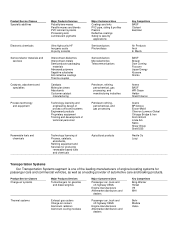 14
14 -
 15
15 -
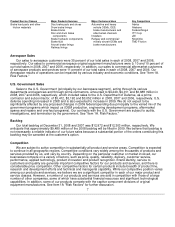 16
16 -
 17
17 -
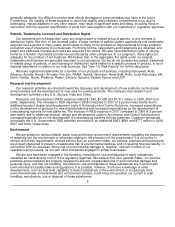 18
18 -
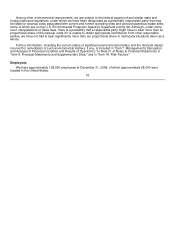 19
19 -
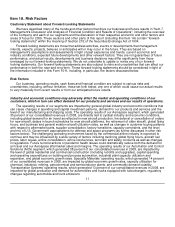 20
20 -
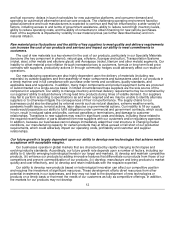 21
21 -
 22
22 -
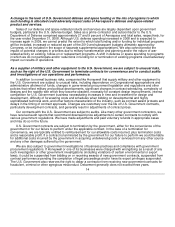 23
23 -
 24
24 -
 25
25 -
 26
26 -
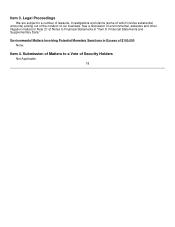 27
27 -
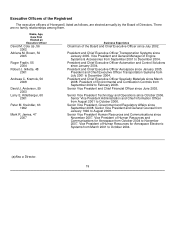 28
28 -
 29
29 -
 30
30 -
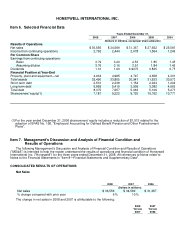 31
31 -
 32
32 -
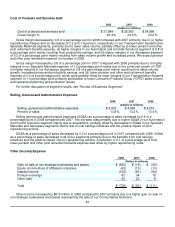 33
33 -
 34
34 -
 35
35 -
 36
36 -
 37
37 -
 38
38 -
 39
39 -
 40
40 -
 41
41 -
 42
42 -
 43
43 -
 44
44 -
 45
45 -
 46
46 -
 47
47 -
 48
48 -
 49
49 -
 50
50 -
 51
51 -
 52
52 -
 53
53 -
 54
54 -
 55
55 -
 56
56 -
 57
57 -
 58
58 -
 59
59 -
 60
60 -
 61
61 -
 62
62 -
 63
63 -
 64
64 -
 65
65 -
 66
66 -
 67
67 -
 68
68 -
 69
69 -
 70
70 -
 71
71 -
 72
72 -
 73
73 -
 74
74 -
 75
75 -
 76
76 -
 77
77 -
 78
78 -
 79
79 -
 80
80 -
 81
81 -
 82
82 -
 83
83 -
 84
84 -
 85
85 -
 86
86 -
 87
87 -
 88
88 -
 89
89 -
 90
90 -
 91
91 -
 92
92 -
 93
93 -
 94
94 -
 95
95 -
 96
96 -
 97
97 -
 98
98 -
 99
99 -
 100
100 -
 101
101 -
 102
102 -
 103
103 -
 104
104 -
 105
105 -
 106
106 -
 107
107 -
 108
108 -
 109
109 -
 110
110 -
 111
111 -
 112
112 -
 113
113 -
 114
114 -
 115
115 -
 116
116 -
 117
117 -
 118
118 -
 119
119 -
 120
120 -
 121
121 -
 122
122 -
 123
123 -
 124
124 -
 125
125 -
 126
126 -
 127
127 -
 128
128 -
 129
129 -
 130
130 -
 131
131 -
 132
132 -
 133
133 -
 134
134 -
 135
135 -
 136
136 -
 137
137 -
 138
138 -
 139
139 -
 140
140 -
 141
141 -
 142
142 -
 143
143 -
 144
144 -
 145
145 -
 146
146 -
 147
147 -
 148
148 -
 149
149 -
 150
150 -
 151
151 -
 152
152 -
 153
153 -
 154
154 -
 155
155 -
 156
156 -
 157
157 -
 158
158 -
 159
159 -
 160
160 -
 161
161 -
 162
162 -
 163
163 -
 164
164 -
 165
165 -
 166
166 -
 167
167 -
 168
168 -
 169
169 -
 170
170 -
 171
171 -
 172
172 -
 173
173 -
 174
174 -
 175
175 -
 176
176 -
 177
177 -
 178
178 -
 179
179 -
 180
180 -
 181
181 -
 182
182 -
 183
183 -
 184
184 -
 185
185 -
 186
186 -
 187
187 -
 188
188 -
 189
189 -
 190
190 -
 191
191 -
 192
192 -
 193
193 -
 194
194 -
 195
195 -
 196
196 -
 197
197 -
 198
198 -
 199
199 -
 200
200 -
 201
201 -
 202
202 -
 203
203 -
 204
204 -
 205
205 -
 206
206 -
 207
207 -
 208
208 -
 209
209 -
 210
210 -
 211
211 -
 212
212 -
 213
213 -
 214
214 -
 215
215 -
 216
216 -
 217
217 -
 218
218 -
 219
219 -
 220
220 -
 221
221 -
 222
222 -
 223
223 -
 224
224 -
 225
225 -
 226
226 -
 227
227 -
 228
228 -
 229
229 -
 230
230 -
 231
231 -
 232
232 -
 233
233 -
 234
234 -
 235
235 -
 236
236 -
 237
237 -
 238
238 -
 239
239 -
 240
240 -
 241
241 -
 242
242 -
 243
243 -
 244
244 -
 245
245 -
 246
246 -
 247
247 -
 248
248 -
 249
249 -
 250
250 -
 251
251 -
 252
252 -
 253
253 -
 254
254 -
 255
255 -
 256
256 -
 257
257 -
 258
258 -
 259
259 -
 260
260 -
 261
261 -
 262
262 -
 263
263 -
 264
264 -
 265
265 -
 266
266 -
 267
267 -
 268
268 -
 269
269 -
 270
270 -
 271
271 -
 272
272 -
 273
273 -
 274
274 -
 275
275 -
 276
276 -
 277
277 -
 278
278 -
 279
279 -
 280
280 -
 281
281 -
 282
282 -
 283
283 -
 284
284 -
 285
285 -
 286
286 -
 287
287 -
 288
288 -
 289
289 -
 290
290 -
 291
291 -
 292
292 -
 293
293 -
 294
294 -
 295
295 -
 296
296 -
 297
297 -
 298
298 -
 299
299 -
 300
300 -
 301
301 -
 302
302 -
 303
303 -
 304
304 -
 305
305 -
 306
306 -
 307
307 -
 308
308 -
 309
309 -
 310
310 -
 311
311 -
 312
312 -
 313
313 -
 314
314 -
 315
315 -
 316
316 -
 317
317 -
 318
318 -
 319
319 -
 320
320 -
 321
321 -
 322
322 -
 323
323 -
 324
324 -
 325
325 -
 326
326 -
 327
327 -
 328
328 -
 329
329 -
 330
330 -
 331
331 -
 332
332 -
 333
333 -
 334
334 -
 335
335 -
 336
336 -
 337
337 -
 338
338 -
 339
339 -
 340
340 -
 341
341 -
 342
342 -
 343
343 -
 344
344 -
 345
345 -
 346
346 -
 347
347 -
 348
348 -
 349
349 -
 350
350 -
 351
351 -
 352
352
 |
 |

A change in the level of U.S. Government defense and space funding or the mix of programs to which
such funding is allocated could adversely impact sales of Aerospace's defense and space-related
product and services.
Sales of our defense and space-related products and services are largely dependent upon government
budgets, particularly the U.S. defense budget. Sales as a prime contractor and subcontractor to the U.S.
Department of Defense comprised approximately 27 and 9 percent of Aerospace and total sales, respectively, for
the year ended December 31, 2008. Although U.S. defense spending increased in 2008 and is expected to
increase again in 2009, we cannot predict the extent to which total funding and/or funding for individual programs
will be included, increased or reduced as part of the 2010 and subsequent budgets ultimately approved by
Congress, or be included in the scope of separate supplemental appropriations. We also cannot predict the
impact of potential changes in priorities due to military transformation and planning and/or the nature of war-
related activity on existing, follow-on or replacement programs. A shift in defense or space spending to programs
in which we do not participate and/or reductions in funding for or termination of existing programs could adversely
impact our results of operations.
As a supplier of military and other equipment to the U.S. Government, we are subject to unusual risks,
such as the right of the U.S. Government to terminate contracts for convenience and to conduct audits
and investigations of our operations and performance.
In addition to normal business risks, companies like Honeywell that supply military and other equipment to
the U.S. Government are subject to unusual risks, including dependence on Congressional appropriations and
administrative allotment of funds, changes in governmental procurement legislation and regulations and other
policies that reflect military and political developments, significant changes in contract scheduling, complexity of
designs and the rapidity with which they become obsolete, necessity for constant design improvements, intense
competition for U.S. Government business necessitating increases in time and investment for design and
development, difficulty of forecasting costs and schedules when bidding on developmental and highly
sophisticated technical work, and other factors characteristic of the industry, such as contract award protests and
delays in the timing of contract approvals. Changes are customary over the life of U.S. Government contracts,
particularly development contracts, and generally result in adjustments of contract prices.
Our contracts with the U.S. Government are subject to audits. Like many other government contractors, we
have received audit reports that recommend downward price adjustments to certain contracts to comply with
various government regulations. We have made adjustments and paid voluntary refunds in appropriate cases
and may do so in the future.
U.S. Government contracts are subject to termination by the government, either for the convenience of the
government or for our failure to perform under the applicable contract. In the case of a termination for
convenience, we are typically entitled to reimbursement for our allowable costs incurred, plus termination costs
and a reasonable profit. If a contract is terminated by the government for our failure to perform we could be liable
for additional costs incurred by the government in acquiring undelivered goods or services from any other source
and any other damages suffered by the government.
We are also subject to government investigations of business practices and compliance with government
procurement regulations. If Honeywell or one of its businesses were charged with wrongdoing as a result of any
such investigation or other government investigations (including violations of certain environmental or export
laws), it could be suspended from bidding on or receiving awards of new government contracts, suspended from
contract performance pending the completion of legal proceedings and/or have its export privileges suspended.
The U.S. Government also reserves the right to debar a contractor from receiving new government contracts for
fraudulent, criminal or other egregious misconduct. Debarment generally does not exceed three years.
14
